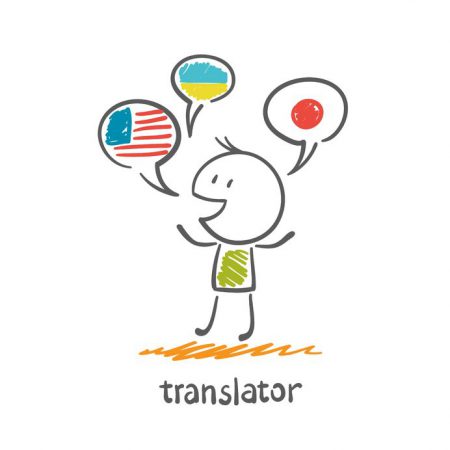
3 Elements of Translation: Adjectives, the Use of Gender, and Alphabets
by Chad Richardson
To some extent, translation is an intuitive thing. The translator sees a sentence in one language and, if they are fluent in another language, they immediately start translating it in their mind. In a way, translation can seem like a game in which you have to find the best possible version of that sentence in the other language. This is a challenging task but in an enjoyable way. The translator goes through a number of steps in their mind, trying to find the best possible translation. Here are some of the things they might have to think about:
- Adjectives: In certain languages, like English, the adjectives come before the noun. So you might say, “an extraordinary man” or “a pretty girl” or “a large house.” In all these cases, the adjectives precede the noun. If there’s more than one adjective, then they might be divided by a comma, depending on the case. But in French, longer adjectives come after the noun and short ones before the noun. So “an extraordinary man” becomes “un homme extraordinaire” while “a pretty girl” becomes “une jolie fille.” A translator has to make an immediate mental adjustment while translating such things.
- Masculine/Feminine: In a language like English, not everything has a gender. Sure, a man may have a gender and a woman may have a gender. But a cup doesn’t. Neither does a book or a pen. But there are certain languages in which every noun has a gender. In French, a cup is “une tasse” which is feminine. A book is “un livre” which is masculine. Plus, the adjective and verb applied to these nouns will also have to agree with their gender. So the whole sentence will, in effect, change due to the gender of the nouns inhabiting it.
- Alphabet: Different languages have different scripts and alphabets. If the translator is translating from English to Hindi, for example, they’ll have to switch alphabets completely. However, if they’re translating from English to French, then the alphabet remains more or less the same, with just a few accents added here and there. Of course, it may be more difficult to translate into a language where the alphabet is completely different but it also depends on the translator’s familiarity with both languages.
Although translation comes across as quite complex, given that you have to consider all these elements, for professional translators they make the changes in their minds automatically. Contact us to learn more about the process of translation.
Related Articles
Why Hyper-Localization and Personalization Are Defining Global Success
Translating content is no longer the benchmark for going global; it’s the baseline. As businesses expand into new markets, what truly drives growth in 2025 is the ability to connect meaningfully with audiences through hyper-localization and personalization. These strategies are redefining how brands communicate. Hyper-localization adapts your message to reflect not just a language,…
AI-Powered LQA and Human Review: The Smartest Way to Scale Localization
Every multilingual project begins with ambition: the ambition to connect, to scale, and to meet global audiences where they are. But ambition often collides with the reality of manual language review processes that strain valuable resources. This friction delays launches and diminishes the agility brands need to thrive internationally. The answer is not replacing people…
Connecting Through Language: Why Global Brands Are Investing in Multilingual Video
In today’s digital world, attention is the most valuable currency—and it’s increasingly multilingual. For brands expanding across borders, creating content that resonates globally isn’t just a competitive advantage; it’s a business necessity. Whether you’re onboarding a workforce, educating customers, or entertaining the masses, your audience expects more than a translated script. They expect localized video…
here
for you
We’d love to learn more about your translation and localization needs.